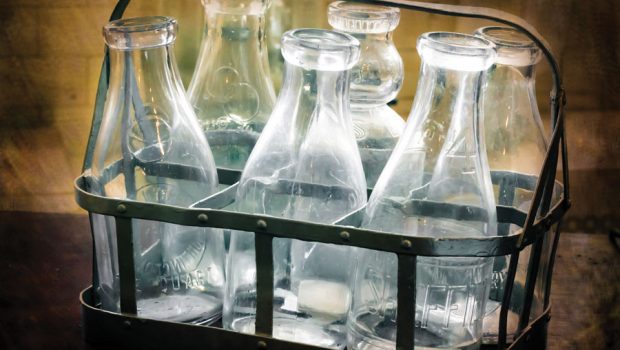The Re-Use Revolution
Plastics Peril Drives New Strategies
by Yvette C. Hammett
Daily news footage and photos capture the damage plastic is doing to the planet’s oceans: turtles ensnared in plastic nets, whales with guts full of plastics and aerial views of the burgeoning island of floating detritus known as the Pacific Garbage Patch. Tiny pieces of plastic are even showing up in our food and drinking water.
Th e growing plastics crisis has some people yearning for the days when soft drinks and beer all came in reusable containers that required a deposit, or when milk and cream were delivered to the front porch in quaint, glass bottles. Sherri Mason, Ph.D., sustainability coordinator at Penn State Behrend, in Erie, Pennsylvania, believes this is exactly the direction this issue may take. “I do think some of it will be a return to glass,” she says.
Mason conducted a study in 2018 and discovered that bottled water contained tiny bits of microplastic. An earlier tap water study she conducted showed there were about five particles of plastic in a liter of tap water, if averaged across the globe. “We thought that would shock people into demanding change. Instead, a lot of the comments were to drink more bottled water.”
In the 2018 study, Mason and her team, then at the State University of New York at Fredonia, tested 259 bottles of water from nine countries that included all the top brands in the U.S.—Dasani, Aqua- fina and Nestlé Pure Life, among them. “On average, for every liter of bottled water in total, you would be ingesting 325 pieces of plastic. We had one bottle of Nestlé Pure Life with over 10,000 pieces of plastic. These are the particles that can make their way across the gastrointestinal tract and be carried to your blood, liver, kidneys and brain,” Mason says.
Analysis of the particles indicates that the plastics found in bottled water leach from the container itself, while the source in tap water may be PVC pipes and fittings. However, plastics are also ubiquitous in surface and groundwater, and may make their way into drinking supplies via air, wind, rain and industrial activity, according to an assessment published earlier this year in the journal Current Opinion in Environmental Science & Health.
Aft er Mason’s findings were released, the World Health Organization announced a review into the potential risks of plastic in drinking water. Meantime, the impact of plastic pollution on marine life—zooplankton, seabirds, marine mammals and reptiles throughout the food chain—is well documented, according to a 2014 study published in the online journal PLOS ONE. The study estimates more than 5 trillion pieces of plastic, weighing somewhere near 269,000 tons, are floating in the Earth’s oceans.
People are loudly calling for change, and innovators are responding. In the United Kingdom, there is the Plastics Pact, which brings together businesses from across the plastic industry to eliminate problematic or single-use plastics through redesign, innovation and alternative delivery models. A UK startup, Ooho, has created an edible water container made of seaweed to provide the convenience of plastic bottles while limiting the environmental impact.
Tom Szaky, the CEO and founder of TerraCycle, a Trenton, New Jersey, recycling company, is among those pioneering a rebirth of reusing with a pilot project launched in May called Loop. The company has partnered with Proctor & Gamble, Nestlé, Clorox and other major brands to deliver and retrieve products in durable, reusable containers, just like the milk man.
Consumers can order everyday items from the online Loop store—paying a deposit on the container—and UPS will deliver it to their doorstep, picking up empties to be washed, refilled and used again and again.
“Hundreds of products, from Tide to Häagen-Dazs to Tropicana, are being delivered,” says Szaky. “It’s growing very fast in New York, New Jersey, Pennsylvania, Maryland and Washington, D.C.; and we’ve just expanded to Connecticut, Vermont, Rhode Island, Massachusetts and Delaware—eventually nationwide.”
The re-use revolution is also taking shape in 10 states and a U.S. territory that have passed “bottle bills”: California, Connecticut, Hawaii, Iowa, Maine, Massachusetts, Michigan, New York, Oregon, Vermont and Guam. Typically, the laws require a deposit of 5 to 15 cents be placed on all glass, plastic and metal containers.
Yvette C. Hammett is an environmental writer based in Valrico, Florida. She can be contacted at YvetteHammett28@hotmail.com.
<













